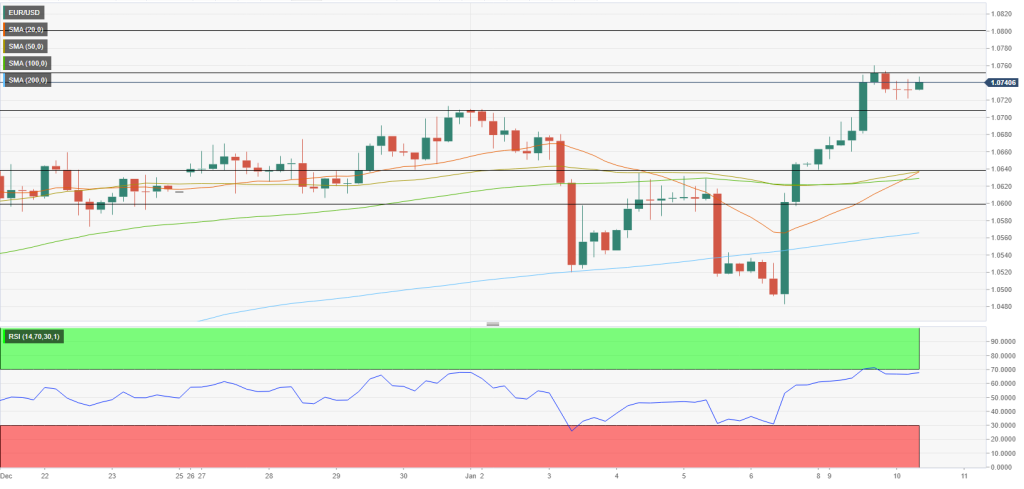EUR/USD has lost its bullish momentum and retreated modestly early Tuesday after having touched its highest level since early June at 1.0761 on Monday. The technical outlook suggests that the bullish bias stays intact but the cautious market mood could cause the pair to stage a technical correction before the next leg higher.
Dovish Fed bets dominated the action in financial markets at the beginning of the week and the US Dollar suffered heavy losses against its major rivals while the benchmark 10-year US Treasury bond yield declined toward 3.5%.
EUR/USD has gone into a consolidation phase following Monday’s upsurge.
Although hawkish comments from Fed officials helped the US Dollar limit its losses in the late American session, they seem to have done little to nothing to change the market pricing of the next policy action. Atlanta Fed president Raphael Bostic said that the Fed was willing to overshoot and San Francisco Fed president Mary Daly noted that core inflation had not come down as they would have liked. Nevertheless, according to the CME Group Fed Watch Tool, the probability of a 25 basis points rate hike in February stands at around 80%.

The pair could find it difficult to gather further bullish momentum in the short term.
In the second half of the day, the NFIB Business Optimism Index for December and the IBD/TIPP Economic Optimism Index for January will be featured in the US economic docket. Meanwhile, US stock index futures are down 0.2% in the European morning. Unless these data releases trigger a risk rally, the US Dollar could extend its correction and weigh on EUR/USD in the second half of the day.
It’s also worth noting that FOMC Chairman Jerome Powell is scheduled to speak at 1400 GMT. Since he will be talking on central bank independence, he is unlikely to comment on the policy outlook.
Dovish Fed bets are likely to limit US Dollar’s potential gains.
The Relative Strength Index (RSI) indicator on the four-hour chart stays within a touching distance of 70, suggesting that the pair is close to turning technically overbought. On the upside, static resistance seem to have formed at 1.0750. In case EUR/USD rises above that level and confirms it as support, it could target 1.0800 (psychological level, static level) and 1.0840 (static level).
On the downside, 1.0700 (psychological level, static level) aligns as first support ahead of 1.0640, where the 20, 50 and 100-period Simple Moving Averages (SMA) on the four-hour chart are located. A four-hour close below that level could be seen as a significant bearish development and open the door for an extended slide toward 1.0560 (200-period SMA).

